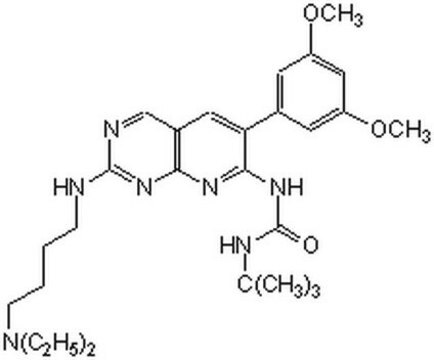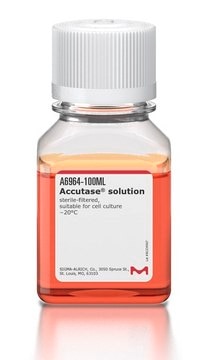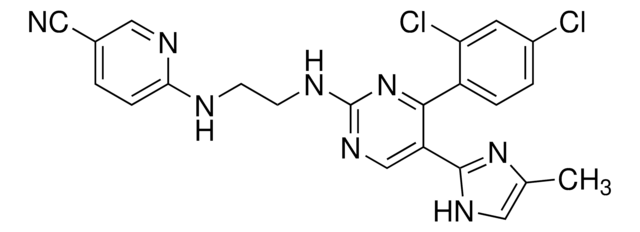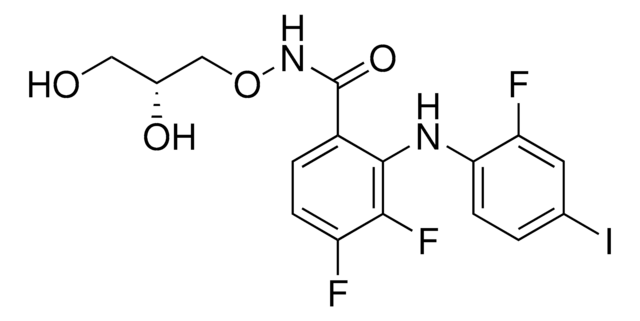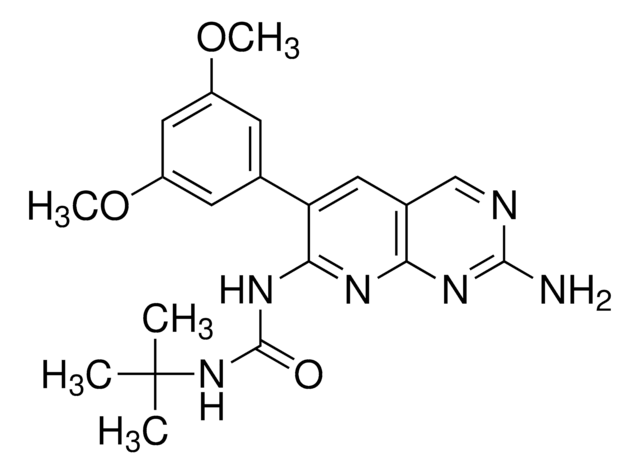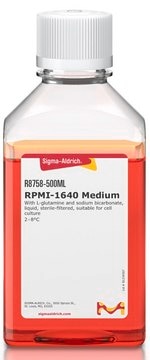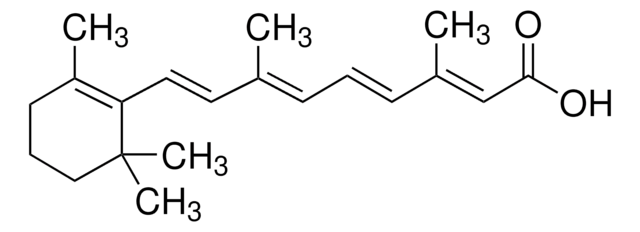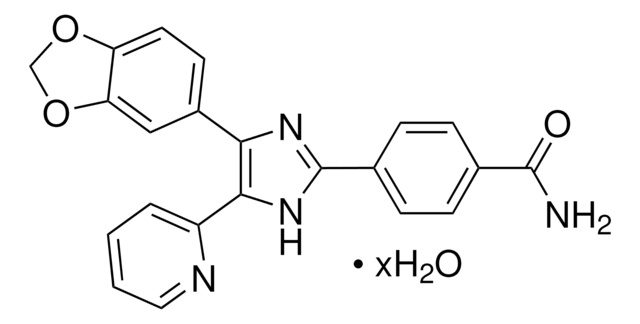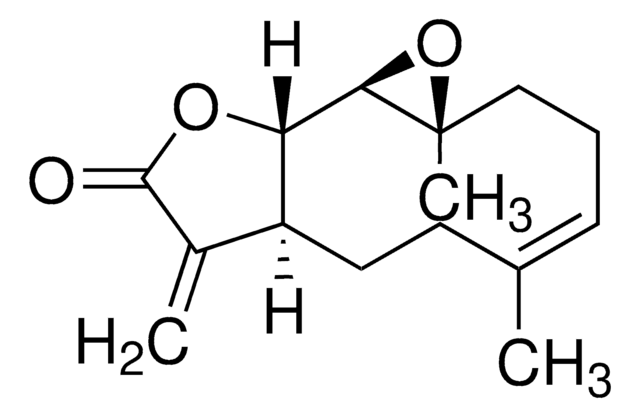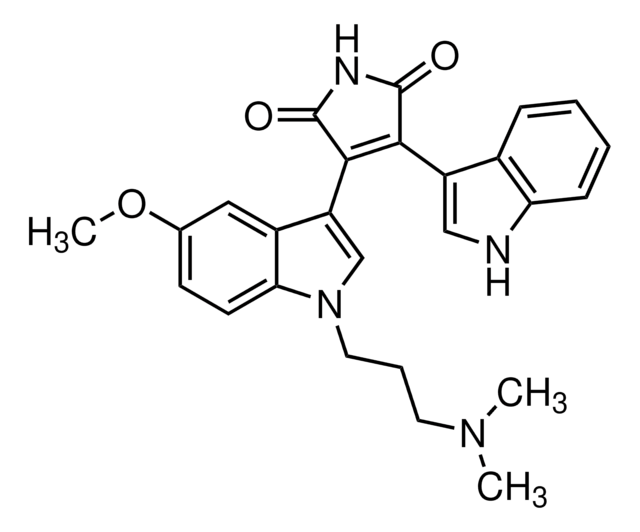P2499
PD 173074
≥96% (HPLC), powder
Synonym(s):
N-[2-[[4-(Diethylamino)butyl]amino-6-(3,5-dimethoxyphenyl)pyrido[2,3-d]pyrimidin-7-yl]-N′-(1,1-dimethylethyl)urea
About This Item
Recommended Products
Quality Level
assay
≥96% (HPLC)
form
powder
color
faintly yellow to dark yellow
solubility
DMSO: 10 mg/mL, clear
storage temp.
2-8°C
SMILES string
CCN(CC)CCCCNc1ncc2cc(c(NC(=O)NC(C)(C)C)nc2n1)-c3cc(OC)cc(OC)c3
InChI
1S/C28H41N7O3/c1-8-35(9-2)13-11-10-12-29-26-30-18-20-16-23(19-14-21(37-6)17-22(15-19)38-7)25(31-24(20)32-26)33-27(36)34-28(3,4)5/h14-18H,8-13H2,1-7H3,(H3,29,30,31,32,33,34,36)
InChI key
DXCUKNQANPLTEJ-UHFFFAOYSA-N
Gene Information
human ... FGFR1(2260) , KDR(3791)
mouse ... Pdgfrb(18596)
Application
- to treat epithelial-mesenchymal transition (EMT)-induced cell lines in order to study its therapeutic use for head and neck squamous cell carcinoma (HNSCC)
- in combination with PD0325901 to test whether an alternative downstream pathway for (fibroblast growth factor) FGF signalling is adopted during human hypoblast induction
- to study its potential role in acute lymphoblastic leukaemia (ALL)-derived cell lines (TOM-1 and NALM-20)
Biochem/physiol Actions
Features and Benefits
Storage Class
11 - Combustible Solids
wgk_germany
WGK 3
flash_point_f
Not applicable
flash_point_c
Not applicable
ppe
dust mask type N95 (US), Eyeshields, Gloves
Certificates of Analysis (COA)
Search for Certificates of Analysis (COA) by entering the products Lot/Batch Number. Lot and Batch Numbers can be found on a product’s label following the words ‘Lot’ or ‘Batch’.
Already Own This Product?
Find documentation for the products that you have recently purchased in the Document Library.
Customers Also Viewed
Articles
Naive pluripotent stem cells are located within the epiblast of mature blastocysts. These primitive “ground-state” cells may be cultured in vitro using specialized media and small molecule inhibitors.
Related Content
Discover Bioactive Small Molecules for Kinase Phosphatase Biology
Our team of scientists has experience in all areas of research including Life Science, Material Science, Chemical Synthesis, Chromatography, Analytical and many others.
Contact Technical Service